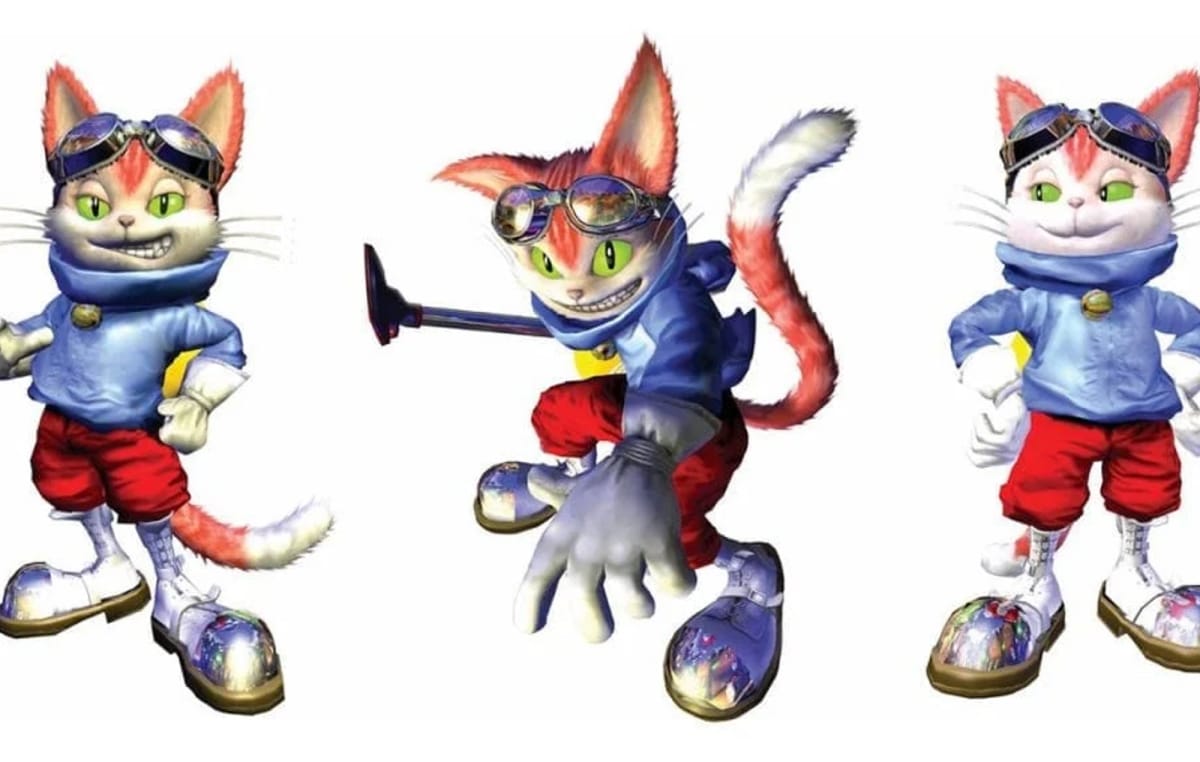Whether it’s for cereal boxes, television shows, football teams, or major companies, mascots play a role in almost any business.
In the video game world, it’s no exception either. For companies like Atlus, a simple Jack Frost snowman is all they need to represent themselves. Sega has, of course, Sonic, and Nintendo definitely needs no explanation.
Like their target demographic, video game companies are extremely competitive in pushing their mascots and building their reputations to be akin to the next Mario. As far as marketing and financial success, none have been able to surpass Nintendo's iconic plumber. While some have arguably come close, none have managed to maintain that consistent quality of producing decent games.
While the 90s and early 2000s saw the emergence of Sonic, Crash Bandicoot, Spyro, and Banjo-Kazooie, they also gave us a lot of rubbish characters. Through their uninspired appearances, obnoxious personalities, and (most often the case) terrible video games, most of these mascots died out instantaneously.

A Short History of Blinx The Time Sweeper
Released in 2002 on the original Xbox, Blinx: The Time Sweeper was a platforming title developed by Artoon. Released as a console exclusive, players controlled a time-traveling cat that could bend reality to attack enemies and solve puzzles. Predating titles such as Prince of Persia: The Sands of Time, the title was certainly innovative for its time (no pun intended) and was well-regarded during its E3 reveal for its originality. While the execution of this pitch wasn't perfect, the development of Blinx, the role of Xbox within the Japanese market, and the failure of both products within that region served as an important lesson for the company for many years to come.
In the early days of Microsoft trying to get its foot in the console market, part of its strategy came through setting up offices across foreign markets to help developers publish titles on their system. In setting up a Japanese publishing branch, Xbox took on board numerous developers to help bring exclusive titles to the upcoming console. One of those studios was Artoon, a fairly new company formed by Sonic creator Naoto Ohshima.
Visiting the Xbox branch, Ohshima pitched the idea of developing a cartoony platformer to help represent Microsoft's new console in Japan. However, instead of coming up with the character first, Ohshima wanted to produce an exclusive that would help highlight the console's hardware power. As Ohshima would say in his interview with GamesRadar, this was the first time any developer approached the company with this sort of specific pitch:
"We visited Microsoft and suggested creating some kind of representative cartoon game for Xbox ... We asked them about the detailed specs and features of the Xbox, and then put together the proposal for Blinx."
After peeking through the hardware specifications, the Japanese developer eventually came up with the idea of a cat that could control time. Given that the Xbox utilized big storage media, the team honed in on that hardware feature and did all they could to make this game into a reality.
Communicating between their Japanese and American branches, Blinx co-producer Earnest Yuen was one of the many people who helped in establishing a strong business relationship between the foreign counterparts. While the business of Blinx was to make him the mascot for the Japanese market, Yuen says that during development, there was even some talk about making Blinx the mascot for the West as well:
"We all pushed to position it as the cute mascot character for Japan. Outside of Japan, I think the mascot potential came after the game started to take shape, [something that] became more apparent after our E3 showing."
According to executive producer Ed Fries, there were even some discussions between Bill Gates and his desire to have a console mascot:
"Bill Gates would ask, ‘What’s your character? What’s your mascot?’ So he was somebody who thought we had to have one. I had run our PC gaming business for a bunch of years, and we didn’t really have a mascot, and I didn’t feel like that hurt [us]. When we launched [with the original Xbox], obviously we had Halo there, and even then I didn’t feel like we were missing a mascot."

At the time of its release, Blinx: The Time Sweeper was met with mixed reviews among critics. While the title received considerable praise for its graphics and originality, many criticized the game for its poor controls, gameplay difficulty, and disappointing execution of the time-traveling mechanic.
Despite its reception, Artoon was still able to follow up with the 2004 sequel, Blinx 2: Masters of Time and Space. Despite its improvements on the title's combat and control scheme, the game was overshadowed by the release of Halo 2, which came out a week before Blinx 2.
After that disastrous release move, the series pretty much ended. As we all know, Halo ended up becoming the face of Xbox, ultimately killing off whatever potential this furry little mascot had. As the years went by, eventually news came around that the Blinx trademark had been dropped. In short, this now meant that the series was officially no more.

What Killed This Mascot?
Despite its support from Microsoft Game Studios, mixed reviews, poor sales, and the lack of Xbox popularity in Japan were what most likely killed this franchise.
In the years after its initial release, it comes as no secret that the original Xbox had a hard time establishing itself in the Japanese market. With the console only selling a total of 450,000 units in that region, Japanese developers were quick to abandon first-party titles for that system and move on to other projects. As you can probably see, it was rather difficult having a Japanese mascot for a system that nobody in the country really owned.
In addition to that, Blinx wasn't a massive seller as a standalone title. In a 2003 report from GameSpy, the title had only sold 156,000 copies, which was considered a huge failure for a title marketed heavily by Xbox.

Could this series have survived if it had been marketed to multiple consoles? I certainly think so.
The problem with Blinx, in my opinion, is that the type of people I know who would've loved this game simply couldn't play it. By that I mean they either owned a GameCube/PlayStation 2 and just couldn't play the title on their designated system. While I know the purpose of Blinx was to sort of help highlight the power of the Xbox system, I can't help but imagine what would've come out of it if they had developed the title for other systems.
Given the success of Ratchet & Clank and Jak & Daxter for the PlayStation 2, I think a time-traveling cat would've been an excellent addition to the PlayStation 2 library. It may not have been a hit but still would've gathered more sales to keep it alive.
Have a tip, or want to point out something we missed? Leave a Comment or e-mail us at tips@techraptor.net













